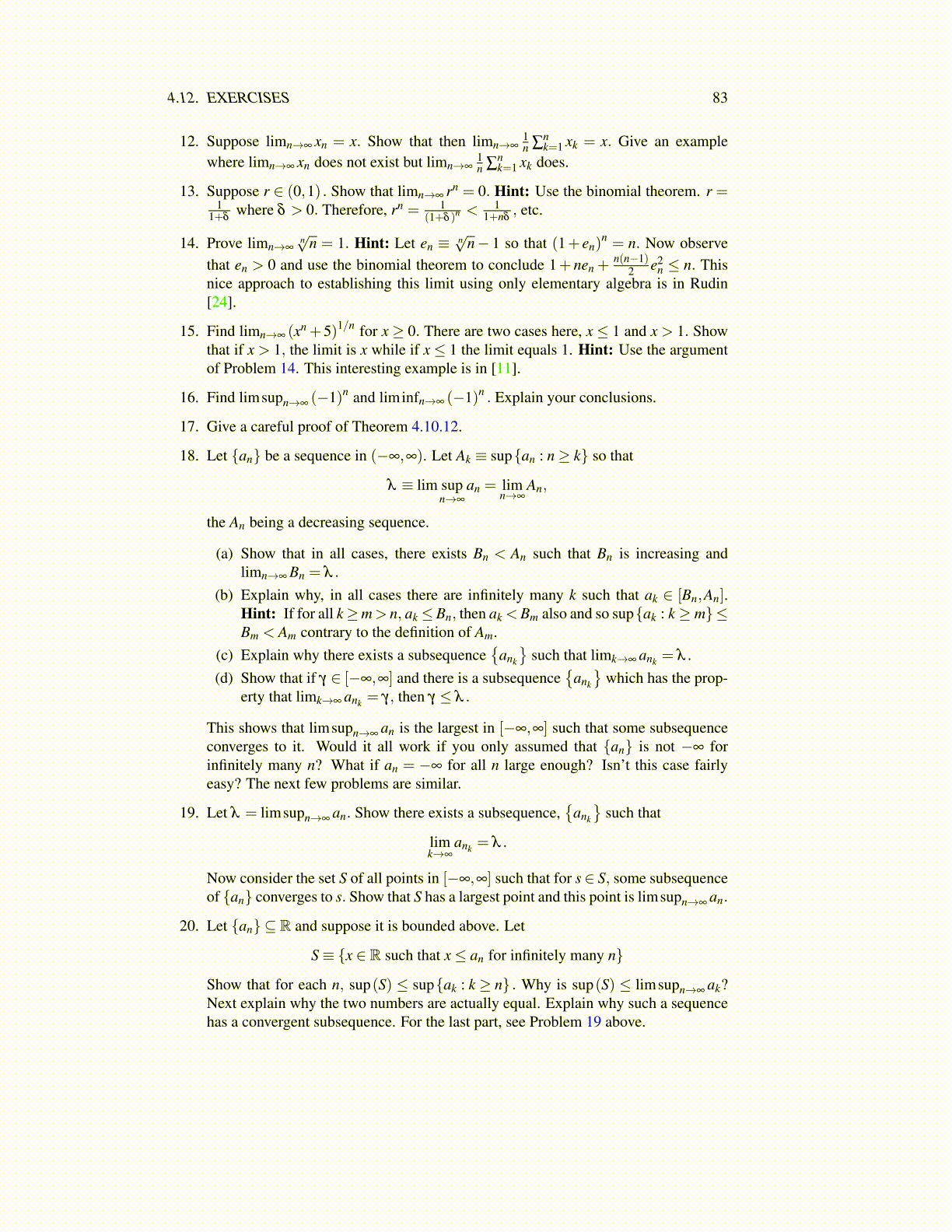
Chapter 5
Infinite Series of Numbers5.1 Basic Considerations
Earlier in Definition 4.4.1 on Page 58 the notion of limit of a sequence was discussed.There is a very closely related concept called an infinite series which is dealt with in thissection.
Definition 5.1.1 Define ∑∞k=m ak ≡ limn→∞ ∑
nk=m ak whenever the limit exists and is
finite. In this case the series is said to converge. If the series does not converge, it is said todiverge. The sequence {∑n
k=m ak}∞
n=m in the above is called the sequence of partial sums.This is always the definition. Here it is understood that the ak are in F, either R or C but itis the same definition in more general situations.
From this definition, it should be clear that infinite sums do not always make sense.Sometimes they do and sometimes they don’t, depending on the behavior of the partialsums. As an example, consider ∑
∞k=1 (−1)k. The partial sums corresponding to this symbol
alternate between −1 and 0. Therefore, there is no limit for the sequence of partial sums.It follows the symbol just written is meaningless and the infinite sum diverges.
Example 5.1.2 Find the infinite sum, ∑∞n=1
1n(n+1) .
Note 1n(n+1) =
1n −
1n+1 and so ∑
Nn=1
1n(n+1) = ∑
Nn=1( 1
n −1
n+1
)=− 1
N+1 +1. Therefore,
limN→∞ ∑Nn=1
1n(n+1) = limN→∞
(− 1
N+1 +1)= 1.
Proposition 5.1.3 Let ak ≥ 0. Then {∑nk=m ak}∞
n=m is an increasing sequence. If thissequence is bounded above, then ∑
∞k=m ak converges and its value equals
sup
{n
∑k=m
ak : n = m,m+1, · · ·
}.
When the sequence is not bounded above, ∑∞k=m ak diverges.
Proof: It follows that {∑nk=m ak}∞
n=m is an increasing sequence because
n+1
∑k=m
ak−n
∑k=m
ak = an+1 ≥ 0.
If it is bounded above, then by the form of completeness found in Theorem 4.10.2 on Page74 it follows that the sequence of partial sums converges to
sup
{n
∑k=m
ak : n = m,m+1, · · ·
}
If the sequence of partial sums is not bounded, then it is not a Cauchy sequence and so itdoes not converge. See Theorem 4.5.3 on Page 62.
In the case where ak ≥ 0, the above proposition shows there are only two alternativesavailable. Either the sequence of partial sums is bounded above or it is not bounded above.
83